Blue Food Innovation Summit Day 1: Data, feeds and seaweeds
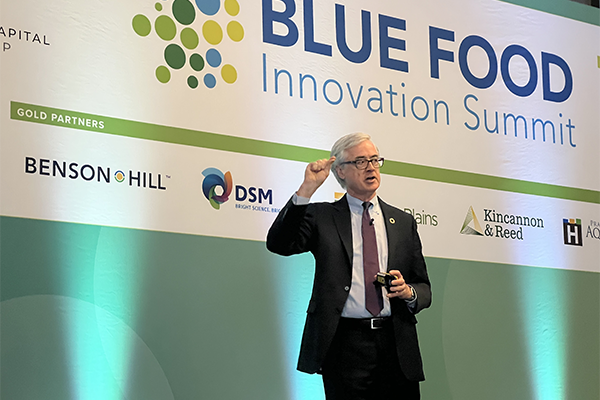
Innovation isn’t just for startups anymore. That’s according to Jim Leape, co-director of the Stanford Center for Ocean Solutions, who said that innovation can be technology, but it can also be new strategies for sustainable practices, feeds with lower footprints, or simply new ways to manage resources or to address issues of justice.
“It’s all hands on deck. It’s an agenda that’s full of opportunity,” said Leape about blue foods, the somewhat recently adopted term to address aquatic foods – animals and plants from marine or freshwater systems all over the world. “We have to find a way to take better advantage of the opportunities that are in the water.”
Leape was the keynote speaker at the Blue Food Innovation Summit, organized by Rethink Events, held in London on May 23 and 24. Leape urged the roughly 300 attendees to think “more expansively” about environmental and social responsibility and to “raise the bar for what good production looks like.”
A strong, recurring message stage was first uttered by Katherine Bryar, global marketing director at Norway-based feed company BioMar. Blue foods, she said, does not favor one production system over another.
“We need to stop the conversation of wild versus farmed. It’s about responsible blue food. That happens in both sectors,” she said, adding that 80 percent of aquaculture’s carbon footprint comes from feed. The pathway to the future, she added, may come from “embracing crazy ideas.”
Getting down with data
With new technologies driving improvements and efficiencies across the seafood value chain, Farghal O’Donncha, a research scientist at IBM, said the future of aquaculture will involve transitioning “from big data to intelligent data.” While the industry “loves data,” he said, the data being collected and used is often “inaccessible and idiosyncratic,” and he called out for better quality to reduce the “noise” of sampling errors and bias.
But it’s still early days for big data, artificial intelligence and machine learning and how each is applied to seafood production. “The data may not be perfect, but this is where we are today,” said Louise Buttle, global key account manager for DSM Aqua, a UK-based animal nutrition company. “Where are we going? What can we commit to as an industry? Mass adoption is about data sensitivity.”
Jonathan LaRiviere, CEO of Scoot Science, warned about a “race to the bottom for price per data point” in an effort to unlock the ocean’s mysteries. “More data means there are more hurdles to make the data useful,” he said. Scoot Science is a team of oceanographers, agro-economists and engineers helping companies like salmon farmers to quantify the risks they face operating in the ocean environment. “Farms can be the lighthouses of the coast. Farmers have decades’ worth of data.”
Bryton Shang, founder and CEO of Aquabyte, a computer vision and AI company operating in Norway, Chile and the United States, said data collection needs to be customized.
“Farmers first, data second,” he said. “With a single camera in a fish pen, you can understand the things you need to know and get a picture of what’s happening. Weight, welfare, quality grading, automatic sea lice counting. More than half of our team are former farmers. There’s a lot of data – abundance is not the problem, it’s putting it into different applications and changing daily workflows.”
Dominique Bureau, founder and CSO of Wittaya Aqua, said there are specific types of data that are pertinent to any given farmed species, but there’s also an “incredible amount of commonalities” that will allow for any production system to be able to use data, AI and machine learning.
“The challenge is adoption. Culture is a problem,” he said. “In dairy, there’s a culture of benchmarking. In aquaculture, it doesn’t exist. Compiling data, comparing it, relying on model simulations – understanding that cycle, we see a lot of opportunity for improvement.”
Study: Blue foods are ‘vital’ in the global food system but excluded from policymaking agenda
Not so novel
With aquafeeds representing the majority of aquaculture’s environmental impact, a lot of attention is being placed on making feeds more sustainable. According to Øyvind Fylling-Jensen, chief executive at Nofima AS in Norway, everything from “A to Zed” must be thrown at aquafeed development, including marine ingredients and trimmings but also alternative proteins and plant-based ingredients.
“Alternative feedstuffs – plants, bacteria, yeast – it’s the scalability and affordability that you have to look at,” he said. “New initiatives will not be replacements but add-ons, supplements to widen the basket of raw materials, like algae, algal oil, rapeseed. But is it available? Is it affordable? Accessible? Does it cause the fish to grow? You can’t fool biology, you need welfare in the first place. Jump that part and you will run into challenges.”
Erik Tveteraas, director of venturing for feed company Nutreco, echoed those sentiments: “We’re moving away from the notion of ‘novel’ ingredients,” he said. “We need to better use ingredients produced in a regenerative, sustainable, circular way, whether it’s novel or just by-streams from established industries.”
Tveteraas added that Nutreco recently merged its procurement and sustainability teams and will incorporate metrics related to carbon footprint and lifecycle analyses.
Fylling-Jensen also said that while ingredient development is key, the physical properties of feed pellets themselves cannot be overlooked: “What works in the lab does not necessarily work at a large pond or [ocean] site,” he said, referring to the often-rough handling of the product on farms.
Mark Luecke, managing director and CEO of Prairie AquaTech, stressed the difficulty of bringing new feed ingredients to market. Prairie AquaTech ferments soy to create a high-protein product, ME-PRO, that is highly digestible for fish.
“Scale is hard. It’s expensive,” he said. “Collaboration is key. Having research infrastructure is critical. We can test ingredients quickly, which attracts collaborators. As hard as scale is, and as expensive as it is, equipment is expensive right now. Inflation and borrowing costs are keeping investors at bay. A cautious approach makes it even harder to scale.”
Nature-based solutions
Giles Cadman, an “ecopreneur” and non-executive chairman for Cadman Capital Group, urged attendees to use their knowledge and skills to grow the industry but to also protect the waterways and estuaries that he grew up loving.
“I’m embarrassed to say that I never knew that catching fish was connected to climate change,” he said. “If we don’t address the ravages of climate change now we will all suffer. I dedicate my time and capital to backing nature-based solutions.”
In the Cadman Capital portfolio is a company called Urchinomics, which gathers sea urchins at places where kelp forests have been reduced to barrens, feeds the urchins a proprietary feed to restore their gonads, and then sells them as a high-value seafood product, all while restoring the kelp forests.
“It’s the dawn of a new era,” he said. “The opportunity is in our hands. My father used to say people won’t save the planet, not until they can make money doing it. The time is now.”
Seaweed farming is also seen as a regenerative and restorative product, but there are a lot of misconceptions about the sea plants’ abilities to sequester carbon and improve water quality. Paul Dobbins, director of impact investing at World Wildlife Fund, admitted there is a lot of hype surrounding seaweed at the moment, but it’s not a “silver bullet” to the ocean’s ills.
“We believe seaweed can contribute meaningfully,” he said.
One way seaweed can contribute to the improvement of global food production systems is through biostimulants, which involve using seaweed as a fertilizer in terrestrial agriculture. Shrikumar Suryanarayan, managing director of Sea6 Energy in India, said seaweed as a biostimulant can reduce fertilizer usage and improve the resistance of plants without pesticides.
“There’s confusion about whether it’s a fertilizer. It’s not a replacement. There is some education required here,” said Suryanarayan. “In my opinion, it’s a third new category of agriculture inputs: fertilizers, nutrients and pesticides. This distinct new category improves the ability of the plant to take up fertilizer. It acts on a genetic level.”
Mike Williamson, president and CEO of Cascadia Seaweed (United States) said biostimulants have huge potential: “It’s excellent for soil,” he said. “Some soils are dead. It helps them become living again and improves the carbon drawdown. Not all seaweeds will help, though, it’s a small subset.”
Jesse Baines, CMO of Atlantic Sea Farms in Maine (United States), pressed the point that seaweeds are food, and not “novel” to the U.S. market as many believe. Atlantic Sea Farms works with lobster fishermen who hold production leases up and down the Maine coast, and is now working with mussel farmers as well, some of whom believe that growing seaweed in proximity to mussels improves the quality of the shellfish.
“The two biggest [seaweed] importers are Costco and Trader Joe’s,” she said. “Seaweed salad, you see it in every sushi restaurant in the world, even in rural communities. The opportunity to grow is a big one.”
Follow the Advocate on Twitter @GSA_Advocate
Now that you've reached the end of the article ...
… please consider supporting GSA’s mission to advance responsible seafood practices through education, advocacy and third-party assurances. The Advocate aims to document the evolution of responsible seafood practices and share the expansive knowledge of our vast network of contributors.
By becoming a Global Seafood Alliance member, you’re ensuring that all of the pre-competitive work we do through member benefits, resources and events can continue. Individual membership costs just $50 a year.
Not a GSA member? Join us.
Author
-
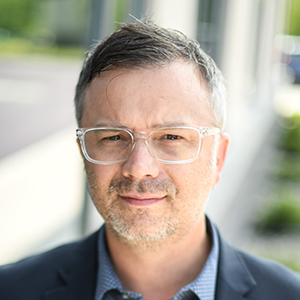
James Wright
Editorial Manager
Global Seafood Alliance
Portsmouth, NH, USA
Tagged With
Related Posts
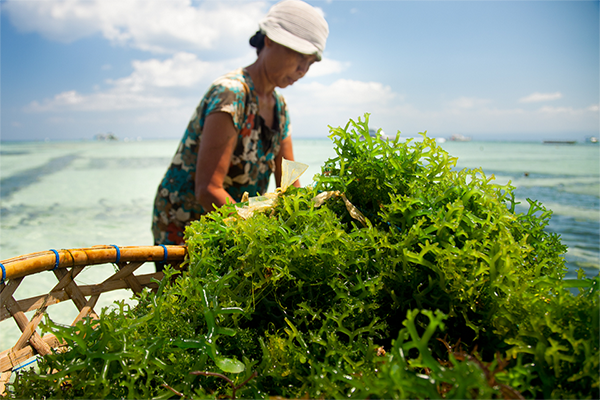
Intelligence
A seat at the table: Fed By Blue team says aquaculture needs a stronger voice
In Fed By Blue, star power and a women-led production team aim to prop up farmed seafood with a focus on the message: Blue foods are the future.
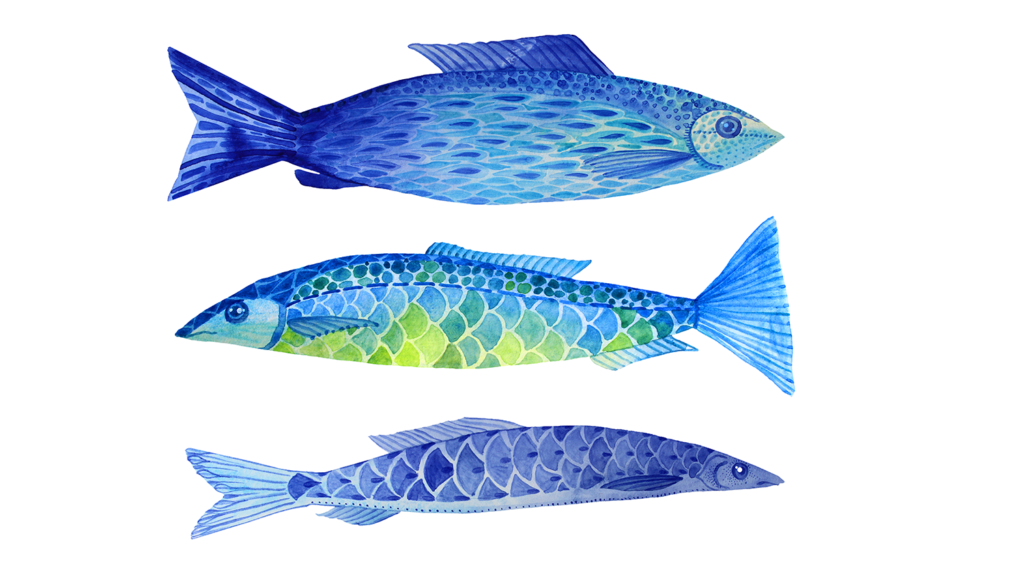
Responsibility
A wider view: It’s blue food’s time
There is urgency to conversations about the role of blue food in mitigating climate change, increasing momentum toward some specific goals.
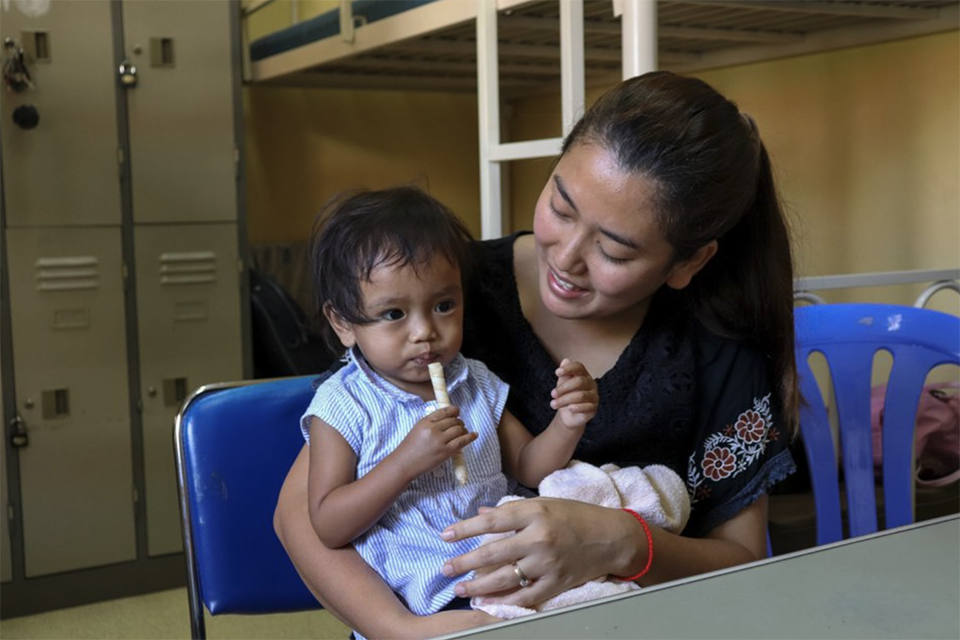
Responsibility
Eat the whole fish: A discussion of culture, economics and food waste solutions
The Big Fish Series explored the logistical and cultural challenges in front of greater whole-fish consumption and how much seafood is being wasted.
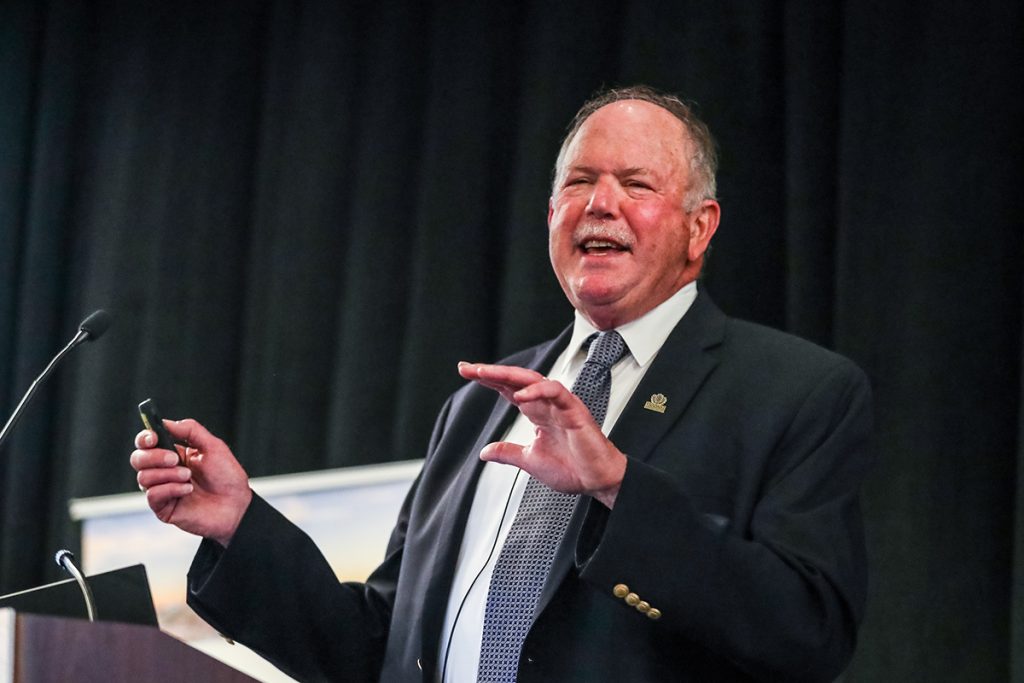
Intelligence
Exploring the relevancy, resiliency and scalability of seaweed farming at Seagriculture
Seagriculture, the first international seaweed conference, covers all angles of seaweed farming for food, energy and climate change solutions.


